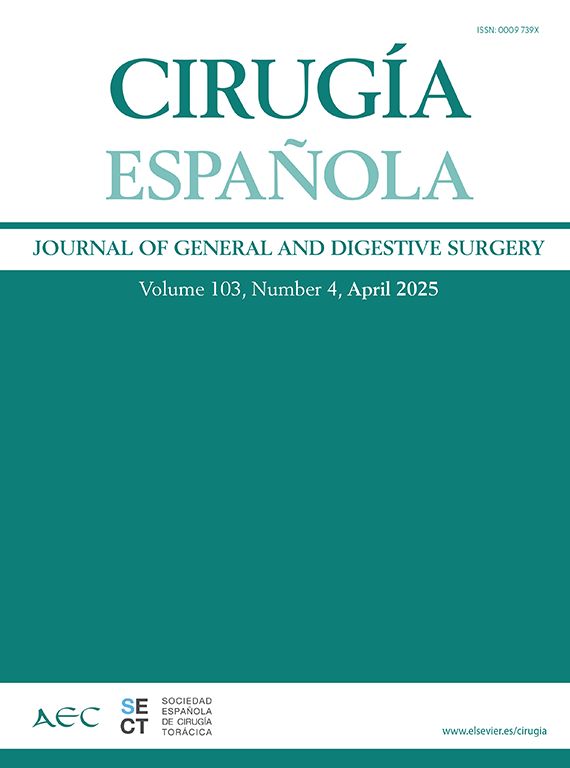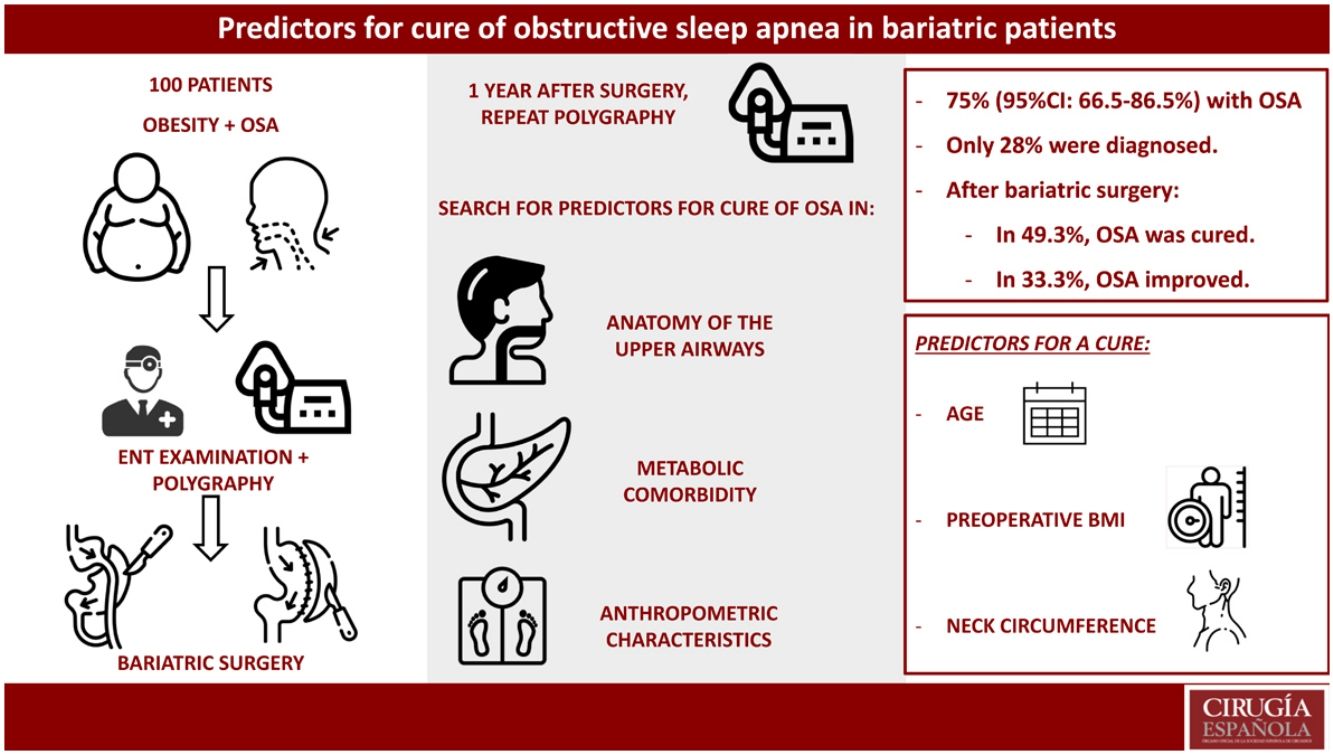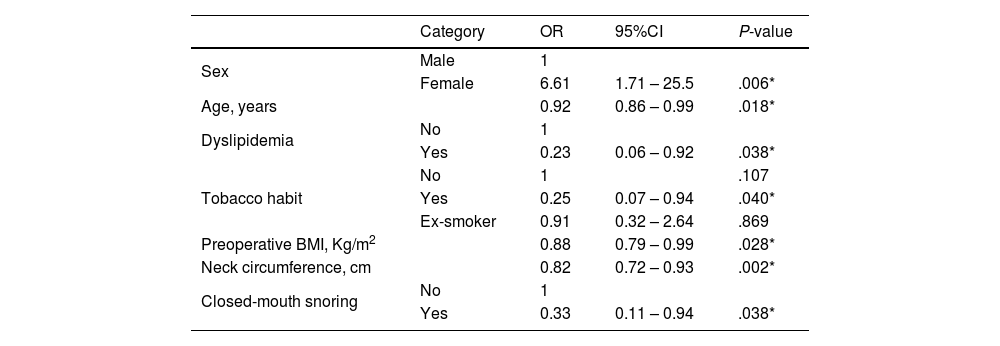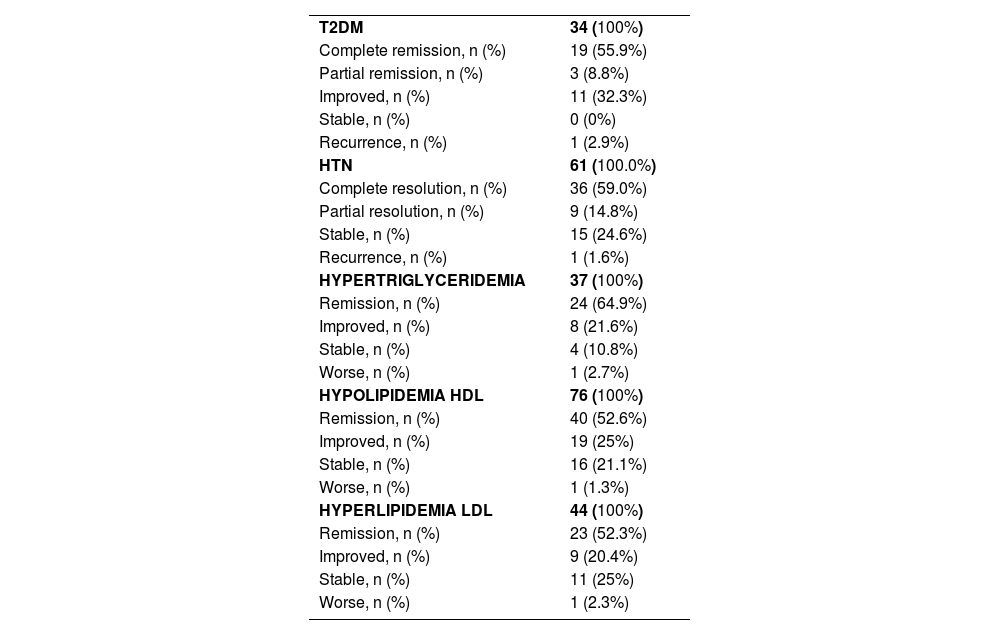Obstructive sleep apnea (OSA) is common among candidates for bariatric surgery and is often underdiagnosed. Given that obesity and OSA share comorbidities and mutually reinforce each other, it is important to identify factors that predict OSA resolution after bariatric surgery. However, studies on this topic are limited and offer contradictory results. The objective of the study was to identify predictors of OSA resolution one year after bariatric surgery.
MethodsA prospective study was conducted with bariatric surgery candidates aged 18–65. Patients underwent preoperative cardiorespiratory polygraphy (PR) and an otorhinolaryngological examination. A follow-up PR was performed one year after surgery. A multivariate analysis was conducted, examining anthropometric, metabolic, and upper airway anatomical variables to determine predictors of resolution.
ResultsThe prevalence of OSA was 75%. Predictors of resolution included preoperative body mass index (BMI), neck circumference and age. Each additional kg/m² in BMI reduced the probability of resolution by 14% (OR = 0.86; P = .037), each additional centimeter of neck circumference reduced the probability by 16% (OR = 0.84; P = .018), and each year of age reduced the probability by 11% (OR = 0.89; P = .009).
ConclusionsThe prevalence of OSA in bariatric patients is high, and BMI, neck circumference, and age are predictive factors of OSA resolution after bariatric surgery.
La apnea obstructiva del sueño (AOS) es frecuente en pacientes candidatos a cirugía bariátrica y está infradiagnosticada. Dado que la obesidad y la AOS comparten comorbilidades y se potencian mutuamente, es importante identificar factores que predigan la curación de la AOS tras la cirugía bariátrica. Sin embargo, los estudios sobre este tema son limitados y ofrecen resultados contradictorios. El objetivo del estudio fue identificar factores predictores de la curación de la AOS tras un año de la cirugía bariátrica.
MétodosSe realizó un estudio prospectivo con candidatos a cirugía bariátrica de entre 18 y 65 años. Los pacientes se sometieron a una poligrafía cardiorrespiratoria (PR) y exploración otorrinolaringológica prequirúrgicas. Al año de la intervención se repitió una nueva PR. Se realizó un análisis multivariante en el que se analizaron variables antropométricas, metabólicas y anatómicas de la vía aérea superior para determinar predictores de curación.
ResultadosLa prevalencia de AOS fue del 75%. Se identificaron como predictores de curación el índice de masa corporal (IMC) prequirúrgico, el perímetro cervical y la edad. Cada kg/m² adicional en el IMC reduce la probabilidad de curación en un 14% (OR = 0,86; p = 0,037), cada centímetro adicional de perímetro cervical la disminuye en un 16% (OR = 0,84; p = 0,018), y cada año reduce la probabilidad de curar un 11% (OR = 0,89; p = 0,009).
ConclusionesLa prevalencia de AOS en pacientes bariátricos es alta, y el IMC, el perímetro cervical y la edad son factores predictores de curación tras la cirugía bariátrica.














